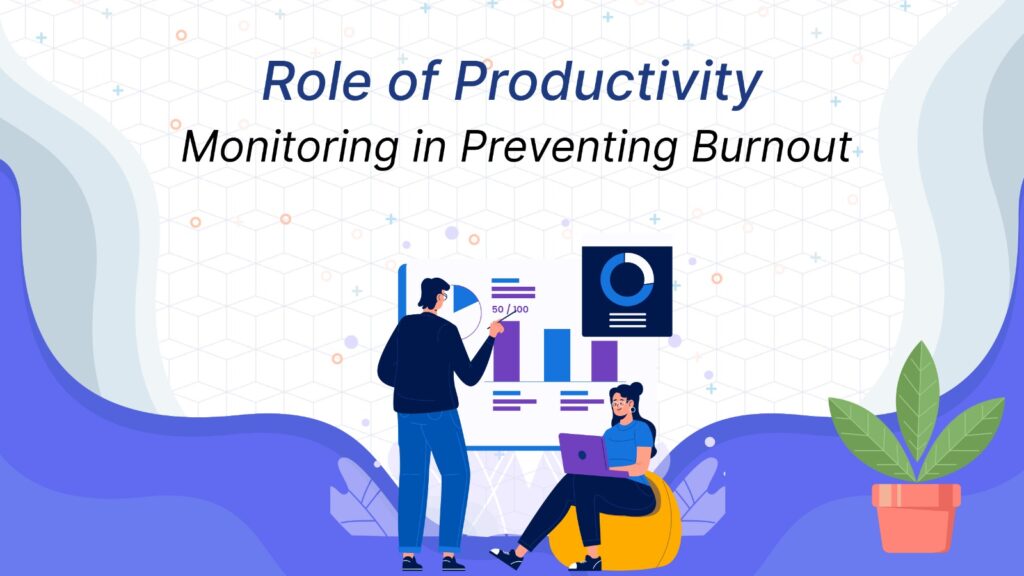
Introduction
Employee burnout is one of the leading challenges facing modern workplaces. Constant pressure, endless meetings, and blurred work-life boundaries make it easy for teams to fall into cycles of stress and fatigue. To address this, organizations are increasingly adopting preventing burnout software tools that combine productivity monitoring, wellness tracking, and digital wellbeing practices.
These tools are not about surveillance. Instead, they help businesses support their workforce with insights into workload, stress levels, and focus patterns. With employee wellness apps and digital wellbeing tools, employees can work smarter, take timely breaks, and maintain long-term resilience.
Why Burnout Prevention Matters
Burnout doesn’t just affect individuals — it affects the entire organization. Studies show that burnout leads to:
- Lower productivity and focus
- Higher absenteeism and turnover
- Increased healthcare costs
- Declining employee morale
By addressing burnout proactively, organizations build healthier, more engaged teams while improving retention and overall business outcomes.
How Productivity Monitoring Tools Help Prevent Burnout
Modern preventing burnout software tools do more than track time. They provide actionable insights that balance workloads and encourage sustainable habits.
1. Workflow Automation
Automation reduces repetitive tasks, freeing employees for meaningful work. Workflow automation tools for burnout prevention ensure that routine processes don’t consume energy needed for deep, creative tasks.
2. Stress Detection and Alerts
Some apps use AI to monitor stress indicators such as excessive overtime or skipped breaks. AI tools monitoring stress and reminding breaks can prompt healthier routines.
3. Performance Monitoring
By tracking workload and efficiency, these tools reveal when employees are overextended. Performance monitoring software helps reduce workplace stress by reallocating tasks or adjusting deadlines.
4. Wellness Features
Integration with employee wellness apps adds meditation, mood tracking, and even distraction-blocking features. This promotes a holistic approach to work-life balance.
Features to Look for in Burnout Prevention Tools
When evaluating software, consider features that actively support well-being:
Mood & Energy Tracking: Allow employees to reflect on daily stress levels.
Break Reminders: Automated nudges for rest, hydration, or mindfulness.
Distraction Blocking: Reduce cognitive overload by limiting interruptions.
Analytics Dashboards: Provide managers visibility into team workload without micromanagement.
Flexibility Controls: Align with remote or hybrid setups, ensuring inclusivity.
Best Practices for Integrating Burnout Prevention Software
Adopting tools isn’t enough — how you integrate them matters. Here are best practices:
Transparency: Communicate the purpose of monitoring — support, not surveillance.
Customization: Tailor alerts and reminders to different roles and schedules.
Training: Encourage employees to use wellness features regularly.
Feedback Loops: Collect employee input to refine usage.
Managerial Role: Use data to rebalance workloads, not penalize staff.
The Role of Flexible Work Tools in Employee Well-Being
Burnout isn’t only about long hours — it’s about lack of flexibility. Tools that allow employees to adjust schedules, block focus time, or work asynchronously contribute to reduced stress and higher satisfaction.
Flexible work tools combined with monitoring features enable organizations to create environments that prioritize balance and autonomy.
Examples of Preventing Burnout Software Tools
Some leading categories include:
Wellness Apps for Employees: Headspace, Calm, or Moodfit integrated with workplace systems.
Digital Wellbeing Tools: RescueTime, DeskTime, or Focus@Will for distraction blocking.
Time Management Apps: Clockify or Toggl for structured scheduling and transparency.
Workplace Productivity Suites: Tools like Microsoft Viva or Slack add-ons with built-in wellbeing reminders.
Trade-Offs and Challenges
While powerful, burnout prevention software has potential drawbacks:
Over-Surveillance Risks: Too much tracking may reduce employee trust.
Data Privacy Concerns: Sensitive wellbeing data must be protected.
One-Size-Fits-All Doesn’t Work: Different roles require different configurations.
Engagement: Tools are only effective if employees actively use them.
Organizations must strike a balance between helpful insights and respecting autonomy.
Future of Burnout Prevention Software
Looking ahead, trends suggest:
AI-Driven Personalization: Tools adapting to individual stress patterns.
Integration with Wearables: Real-time health monitoring through smartwatches.
Case Studies in Action: Demonstrating how technology reduces workplace burnout across industries.
Holistic Digital Ecosystems: Unified platforms combining productivity, wellness, and collaboration.
Conclusion
The fight against burnout requires more than wellness seminars or one-off initiatives. By adopting preventing burnout software tools, businesses can create sustainable work environments where productivity and well-being go hand in hand.
With the support of employee wellness apps and digital wellbeing tools, organizations can reduce stress, improve engagement, and foster a culture of resilience.
Burnout may be a growing workplace challenge, but with the right technology, it doesn’t have to define the future of work.



